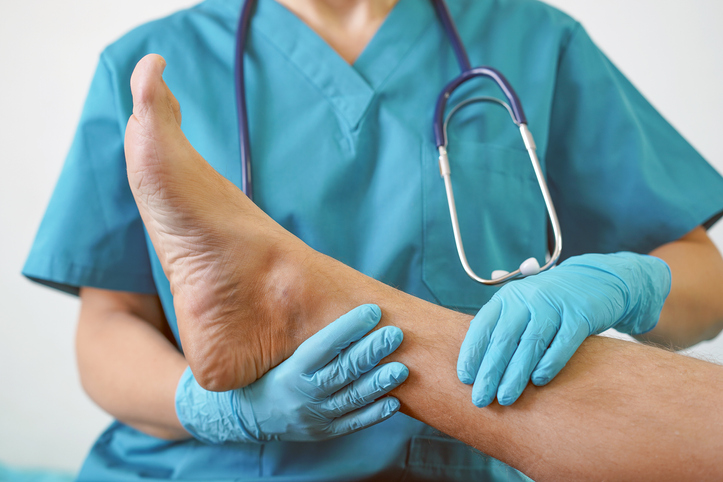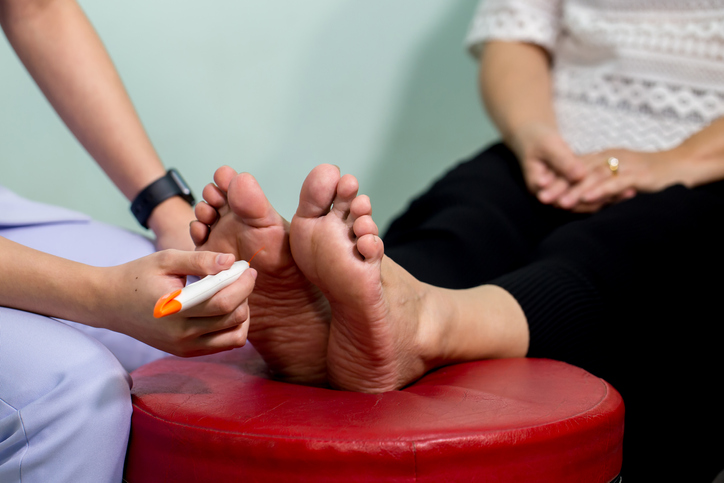Pain
Types of Foot Pain

249 people found this helpful
Print
Share
Save
Heel pain
- Pain in the heel of the foot is often due to plantar fasciitis, which is an inflammation of the band of tissue connecting the heel bone to the toes. The pain is usually worse in the morning and is felt in the heel or the arch of the foot.
- Heel spurs are another cause of foot pain. These are irregular bone growths on the bottom of the heel. They can be caused by wearing ill-fitting shoes, poor posture, irregular gait or intense exercise.
- Stone bruises are deep bruises on the fat pad of the heel or ball of the foot. Usually caused by an impact injury, stone bruises may also be caused by stepping on a hard object.
- Heel fractures are another cause of foot pain caused by an impact injury. Heel pain, bruising, swelling or difficulty walking are the main symptoms of a heel fracture. They are usually caused by falls or car accidents.
Ball of the foot pain
- Metatarsalgia is a condition that causes pain and inflammation in the ball of the foot. Shoes that do not fit properly are the common cause. Over activity may also cause metatarsalgia.
- Morton’s neuroma is a thickening of the tissue around the nerves between the bases of the toes (typically between the third and fourth toe). Symptoms include pain, strange sensations or numbness over the ball of the foot. It can be caused by tight or high-heeled shoes.
- Sesamoiditis is a condition where the sesamoids (two bones by the big toe connected by tendons) are injured and become inflamed. It is a common foot injury among ballet dancers and runners.
Arch pain
- Plantar fasciitis is the most common cause of arch pain. Plantar fasciitis may affect the heel or the arch.
- Fallen arches, or flat feet, is another painful condition in which the arch flattens out when standing or walking.
Toe pain
- Gout is a cause of toe pain typically affecting the big toe. It is a type of arthritis where crystal deposits form in the toe joints causing pain and swelling.
- Bunions are a bony distention along the edge of the foot by the bottom of the big toe. This condition is caused by a misalignment of the first toe joint.
- Hammer toe is when the second, third or fourth toe bends up at the middle joint, creating a hammer-like form.
- Claw toe is a condition in which the toe either points up or down and is incapable of straightening. Nerve damage is usually the cause, especially from diabetes or alcoholism.
- Ingrown toenails occur when skin grows over the side of the nail. This may cause pain and is prone to infection.
- Turf toe is when there is a pain at the base of the big toe, possibly caused by injury or a sesamoid fracture.
- A toe sprain can occur when a toe is jammed or stubbed. A toe fracture can occur in any of the bones of the toes and may require surgery.
- A toe fracture, or broken bone, can occur in any of the toes. Visiting a health care provider to see if it is a minor or severe fracture is important.
- Hallux rigidus is a type of arthritis. Pain and stiffness occur in the joint of the big toe that may progressively get worse.
- Corns are thickened, tough skin created by an area of irritation on the foot or toe. Ill-fitting shoes are usually the cause.
- A break in the small bones that are located in the tendons attached to the big toe is known as a sesamoid fracture.






